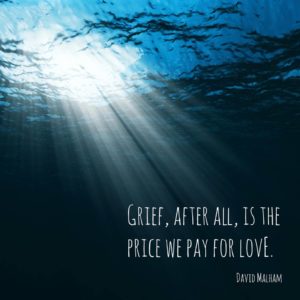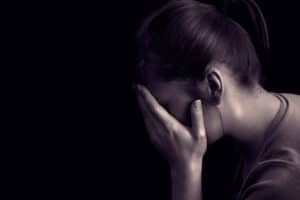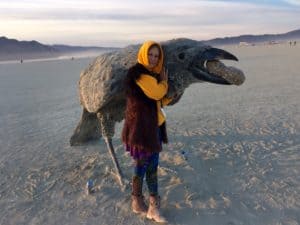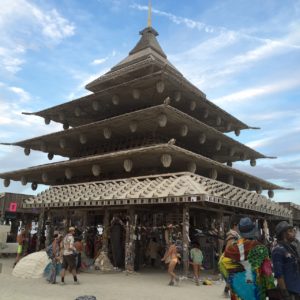“Our silence about our grief serves no one. We can’t heal if we can’t grieve; we can’t forgive if we can’t grieve. We run from grief because loss scares us, yet our hearts reach toward grief because the broken parts want to mend. We can’t rise strong when we’re on the run.” Brené Brown .
We all know grief, we all have been there. It’s hard to write about grief. It is so private and personal and deep. It is sacred and we let only few into those dark chambers and at times shadows.
Recently I decided to ‘take myself to therapy’ and deal with some issue and wounds that have been ‘unattended’.. as we say ‘physician – heal thyself‘.. I knew, but was able to ‘walk around it’, how early grief can become strategies for coping, but that I needed to deal with that grief.
What has been coming up for me is how I formed early strategies around early trauma and grief. How we learn to survive and even strive, by forming strategies of numbing, dissociating, ignoring, minimizing g… anything to ‘not feel the pain‘. those strategies can become ‘tragedies’, when those neuron-paths in our brain, create an ‘operating system’ that default to not feeling or not caring.. or pushing through, or ‘getting over’. Without the proper grieving, our childhood survival copings, can become our ‘crutches’ and our ‘shut-downs’ later on in life.
g… anything to ‘not feel the pain‘. those strategies can become ‘tragedies’, when those neuron-paths in our brain, create an ‘operating system’ that default to not feeling or not caring.. or pushing through, or ‘getting over’. Without the proper grieving, our childhood survival copings, can become our ‘crutches’ and our ‘shut-downs’ later on in life.
I always say, there is no healing without grieving and no forgiving with out grieving.
A widow once told me how her family wishes she was ‘over her grief’ already, and how much she wants, but can not, ‘get back to normal’ even after all those years. We need time to grieve and heal, and there is no time line.
A mother who lost her child told me, ‘You never get over the pain, you get use to living with the pain and the loss, but I will never be whole again’. When we lose someone we love, it is like we lose part of ourselves, and yes, we may never be ‘whole’ again.
A parable that always touched me was the Parable of the Mustard Seed about a woman who lost her child to death, and how the master told her he can cure her child if she brought him mustard seed from a house that was not touched by death. ‘Bringing the body of her son with her, Kisa found Buddha and pleaded with him to help bring her son back to life. He instructed her to go back to her village and gather mustard seeds from the households of those who have never been touched by the death. From those mustard seeds, he promised he would create a medicine to bring her son back to life. Relieved, she went back to her village and began asking her neighbors for mustard seeds… As the day became evening and then night, she was still without any of the mustard seeds that she had been instructed to collect. She realized then the universality of death’.
In her well known work about grief, Elisabeth Kubler-Ross talks about The Five Stages of Grief –  denial, anger, bargaining, depression, and acceptance – as part of the framework that makes up our learning to live with the one we lost. They are tools to help us frame and identify what we may be feeling. But they are not stops on some linear timeline in grief.
denial, anger, bargaining, depression, and acceptance – as part of the framework that makes up our learning to live with the one we lost. They are tools to help us frame and identify what we may be feeling. But they are not stops on some linear timeline in grief.
David Kessler who coauthored books with Elisabeth Kubler- Ross, writes: “The five stages, denial, anger, bargaining, depression and acceptance are a part of the framework that makes up our learning to live with the one we lost. They are tools to help us frame and identify what we may be feeling. But they are not stops on some linear timeline in grief. Not everyone goes through all of them or in a prescribed order. Our hope is that with these stages comes the knowledge of grief ‘s terrain, making us better equipped to cope with life and loss. At times, people in grief will often report more stages. Just remember your grief is an unique as you are.”
 But the truth is, we do not need to get anywhere – anytime. We need to take time to grieve. Grieving over the loss of a loved one, a relationship that ended, kids leaving home and staying in the empty nest, aging, sickness, loss of health, there are many times of grief in our life. Taking time to grieve is so important and essential.
But the truth is, we do not need to get anywhere – anytime. We need to take time to grieve. Grieving over the loss of a loved one, a relationship that ended, kids leaving home and staying in the empty nest, aging, sickness, loss of health, there are many times of grief in our life. Taking time to grieve is so important and essential.― Brené Brown, Rising Strong
“Our silence about our grief serves no one. We can’t heal if we can’t grieve; we can’t forgive if we can’t grieve. We run from grief because loss scares us, yet our hearts reach toward grief because the broken parts want to mend. We can’t rise strong when we’re on the run.” Brené Brown .
~~~~~~ It is that time of year again ~~~~~
Those of you who know me, know that every year on the week leading up to Labor Day, I make a  pilgrimage to the Black Rock Desert in Nevada to partake in the Burning Man festival event.
pilgrimage to the Black Rock Desert in Nevada to partake in the Burning Man festival event.
I find Burning Man, with its gigantic artistic and creative art installations; enormous pilgrimages from all over the world; the principles of sharing, INCLUSION, gifting, and self-reliance; and the conflicting beauty and hardship of the tough desert conditions; to be compelling.
I have also over the years of participating, found my own way to contribute to this amazing event. I now go every year as part of the medical team on the Mental Health Branch (CIT- Critical Incident Team) of the Emergency Service Department (ESD), they call us ‘psychs on bikes’. We provide mental health services to deal with anything from ‘home sickness’ to ‘drug over dose’, to sexual assault and domestic violence.
Here is the blog post I wrote few years ago about my work at Burning-Man.
 Burning Man is not just a fun and crazy festival. For me it is connecting with myself in the desert, time for reflection and re-set of the year. It is also a time for grief over losses. The Temple at Burning Man is a sacred place to grief losses of loved one. The temple is built and designed as a place of solemn reflection and prayer. It honors loss, holds space for grief, and offers a shelter for those in need of sanctuary. People create sacred alters a the Temple to honor their lost ones. The Temple is the spiritual dimension that grounds much of the festivities. On Sunday, the last day of Burning-Man, the Temple and its content is burn in a silent ritual.
Burning Man is not just a fun and crazy festival. For me it is connecting with myself in the desert, time for reflection and re-set of the year. It is also a time for grief over losses. The Temple at Burning Man is a sacred place to grief losses of loved one. The temple is built and designed as a place of solemn reflection and prayer. It honors loss, holds space for grief, and offers a shelter for those in need of sanctuary. People create sacred alters a the Temple to honor their lost ones. The Temple is the spiritual dimension that grounds much of the festivities. On Sunday, the last day of Burning-Man, the Temple and its content is burn in a silent ritual.
Here is a good article about the Temple at Burning-Man. behold-the-dusty-beauty-of-the-burning-man-temple
